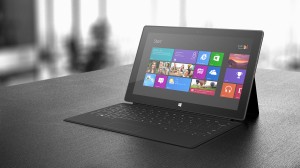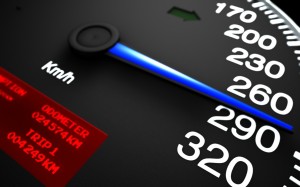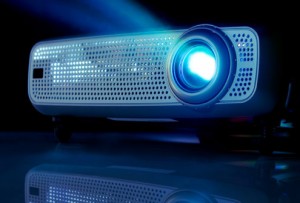 Microsoft’s new Surface tablet with Windows 8 Pro delivers phenomenal cosmic powers… in an itty bitty living space.
Microsoft’s new Surface tablet with Windows 8 Pro delivers phenomenal cosmic powers… in an itty bitty living space.
It’s speed and responsiveness are even surprising as one taps and clicks away expecting the same experience as other ultra-portable devices. But like any physical device, portability comes at the expense of screen and keyboard real estate. Computing power likewise is inversely proportional to battery life. This device is a best-in-class ultraportable, but is it the best device for you?
And that, dear reader, is the question I hope to help you answer with clarity and certainty.
The journey to this answer begins with honesty and introspection. It’s easy to be wooed by marketing and succumb to the compulsion to buy… Understanding your own real-world usage patterns is key to making the right buying decision. Let’s start with some important considerations – bear in mind that some are specific to the Surface Pro, and some are common across the whole ultraportable range:
Computing Power
 Only the most demanding applications will require more juice than the Surface can deliver. Photoshop, Illustrator and other design and productivity run as smoothly as you would expect on a regular desktop. If you are re-encoding HD video, you’re going to want a different class of machine, though the Pro tablet still managed to surprise me even with x.264 encodes in Handbrake.
Only the most demanding applications will require more juice than the Surface can deliver. Photoshop, Illustrator and other design and productivity run as smoothly as you would expect on a regular desktop. If you are re-encoding HD video, you’re going to want a different class of machine, though the Pro tablet still managed to surprise me even with x.264 encodes in Handbrake.
3D Graphics/Gaming
Don’t expect to play anything modern or demanding with Intel’s HD4000 graphics. The Surface will disappoint if you expect a mobile gaming rig. You’ll definitely need to look into a different class of machine for your LAN party excursions, usually starting in the $1500 range (see our upcoming review on such a machine next week).
Portability
Best in class, hands down. If you need your full computing environment with you everywhere you go, this will be the easiest computer to tuck under your arm, or into your purse or attache.
Meetings and Presentations
 Again, this is a top-flight product as the Display Port can output (via passive adapter) to nearly any type of projector. The ability to draw on slides in real-time should not be underestimated, and for impromptu presentations the small but extremely sharp screen’s viewing angles will not leave your audience squinting.
Again, this is a top-flight product as the Display Port can output (via passive adapter) to nearly any type of projector. The ability to draw on slides in real-time should not be underestimated, and for impromptu presentations the small but extremely sharp screen’s viewing angles will not leave your audience squinting.
Students/Note-Taking
Coupled with the quiet Type cover, the Surface’s small footprint allows intense note taking in varied settings. Also, the ability mentioned above to hand-annotate slides and PDF’s is a game changer. The only caution for students would be the battery life, which can range from 4 to 9 hours depending on usage and power settings.
Data Entry/Transcription
One major drawback with the ultraportable form factor is the screen size. If you deal with multiple text documents and spreadsheets simultaneously, you will want more screen real estate in the shape of an external monitor. Programs like VirtuaWin can mitigate this limitation quite dramatically, but if you’re frequently generating reports from multiple document sources, there’s nothing that beats a very large, high-res monitor.
“Entertainment” Tablet
As a tablet, the Surface Pro is capable, but very heavy and unwieldy. For bedtime reading and surfing, you will be better served with a light/thin tablet (iPad, Nexus) or e-reader. The only place the Pro may be at the head of the pack is for stationary use such as on a treadmill, where the swipe features for web and book navigation really shine. Additionally, the built-in kick stand makes for great impromptu YouTube viewing. Otherwise, this device’s heft takes it out of contention as a comfortable, lean-back entertainment device.
Large File Management
Our tablet-come-notebook lacks the large storage capacity of a traditional hard drive, bearing only about 90GB of usable storage out of the box. That limitation is offset by the Micro-SD slot (up to 64GB) and the USB 3.0 port, which gives the option of attaching a high-speed 2TB drive. Not the best solution, but the tradeoff is portability – you’d be carrying that weight anyway with a traditional laptop, no matter how you slice it.
Handy Summary for the Lazy

Bottom Line
The bottom line is that if you spend all day in front of a computer screen, you’re going to want to pair the Pro with an external monitor, and possibly a keyboard with numpad. Of course this is true of any computer with an 11″ or smaller screen, but the difference here is that the Surface delivers the power to be your primary machine pretty much anywhere with very little compromise. If you are an on-again-off-again computer user, especially someone who is out and about, this new rig could be the magic bullet you’ve been waiting for.